We introduce you to the best varieties of raspberries, blackberries, currants, blueberries, gooseberries, cranberries and lingonberries.

Berry bushes can be found in most kitchen gardens. Raspberries and Blackberries Sometimes they need a lot of space, but they are also happy to allow them. As a thank you, there are plenty of delicious fruits. Blueberry bushes are ideal for smaller gardens. On embankments are cranberries or blueberries an excellent alternative to the classic ground cover and also provide very healthy berries. In this article, we will introduce you to the best varieties of the berries already mentioned, as well as currants and gooseberries. In our selection of the varieties, the taste often played the greatest role, but we also made sure not to recommend any varieties that are particularly susceptible to disease or frost. And if it does, we have noted any sensitivities. So below you will find the best types of berries for your garden.
contents
- Raspberry varieties
- Blackberry varieties
- Blueberry / blueberry varieties
- Currant varieties
- Gooseberry varieties
- Cranberry varieties
- Cranberry varieties
Raspberry varieties
When purchasing a raspberry plant, there is always the choice between summer and autumnRaspberry varieties at. There are some differences between summer and autumn raspberries. One of them is the taste, which we think is better with most summer varieties. For this reason, with one exception - the yellow autumn raspberry 'Golden Everest' - almost all of our 'best raspberry varieties' are summer raspberries. Autumn raspberry varieties, however, are less susceptible to disease. So if you've already had problems with raspberries, it's better to accept a small compromise in taste and choose a good autumn raspberry variety.
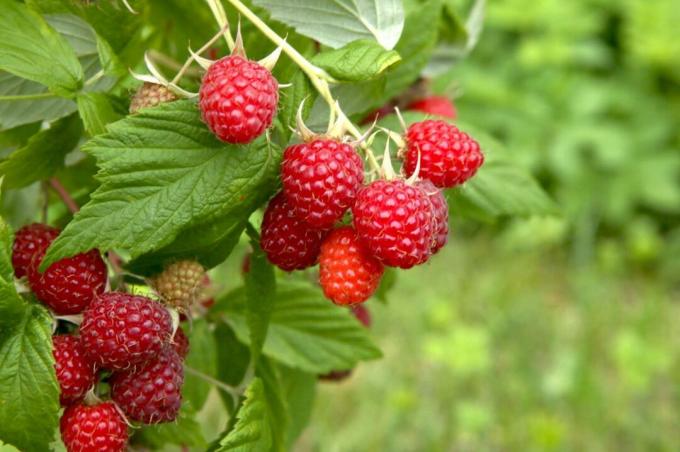
'Himboqueen': Very high-yielding raspberry with very large, very good-tasting, sweet fruits; strong growth; only recommended for large gardens; very sensitive to root death and viruses.
‚Meeker‘: Very aromatic variety; medium-sized, beautiful fruits with good shelf life; strong young shoot growth; resistant to diseases; frequently grown variety with high susceptibility to frost and dehydration; Recommended only in sheltered locations.
‚Rubaca‘: Good, sweet, aromatic taste and high yield; medium-sized, rather soft, medium-juicy fruits; very robust and frost hardy; resistant to root diseases.
‚Himbostar‘: Cultivar not very susceptible to diseases; good yield with sufficient rainfall or irrigation; bright red, medium-sized berries with lots of juice; sweetish, very aromatic taste; easily susceptible to gray mold.
'Golden Queen': Yellow summer raspberry with medium-sized, round, very tasty fruits; productive with an exceptionally long harvest time; relatively robust, healthy plant.
‚Golden Everest‘: Mid-early ripening yellow autumn raspberry with large berries; sweet and very aromatic; good frost resistance and otherwise resistant.

Blackberry varieties
In the case of the blackberries, those that are not bristled or are often incorrectly called thornless Blackberry varieties often the more popular. The taste of these varieties, which were selected for thornlessness and not for taste, often left something to be desired in the past. In the meantime, however, there are also stingless varieties (e.g. B. 'Waldo', 'Loch Ness', 'Navaho'), which can keep up with the others in terms of taste without any problems.

'Silvan': Very early, slow growing variety; very large, very good tasting berries; high frost resistance, but very susceptible to tendril disease.
'Waldo': high-yielding, very early-ripening variety with a long harvest period; large, very tasty fruits with very small seeds; stingless; medium-strong, compact growing, so can be planted a little closer.
‚Loch Ness' respectively. 'Nessy': Ripening from early / mid-July; moderately growing, thornless rods; very large, firm berries; aromatic, sweet and sour taste.
‚Theodor Reimers‘: Well-tried, very productive variety; ripening from the end of July; prickly, very long, frost-sensitive tendrils; very sweet, aromatic and juicy, albeit slightly smaller berries; undemanding regarding the soil.
‚Navaho‘: Also late-ripening variety; large, firm fruits with a very aromatic, sweet and sour taste; perhaps the most aromatic of the thornless blackberries; very strong upright, long tail; robust variety.
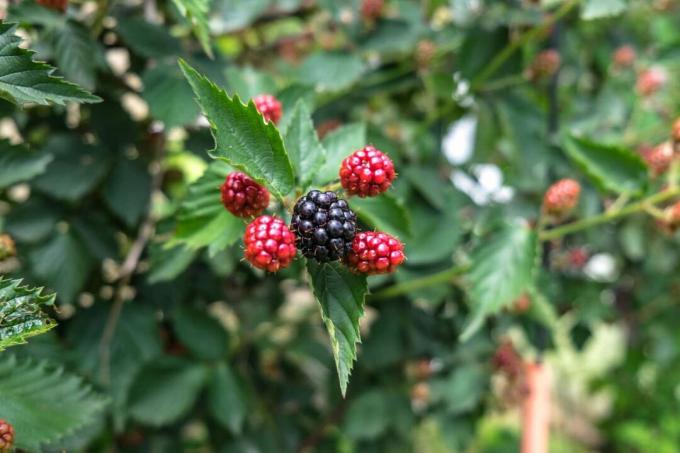
Blueberry / blueberry varieties
While raspberries, currants and the like have been growing in our home gardens for a long time, when it comes to blueberries and blueberries, people were content with collecting them in the forest for a long time. In the meantime, however, cultivated blueberries are also becoming increasingly popular. They are not quite as aromatic as the wild varieties, but their size and crunch still make them a wonderful taste experience.
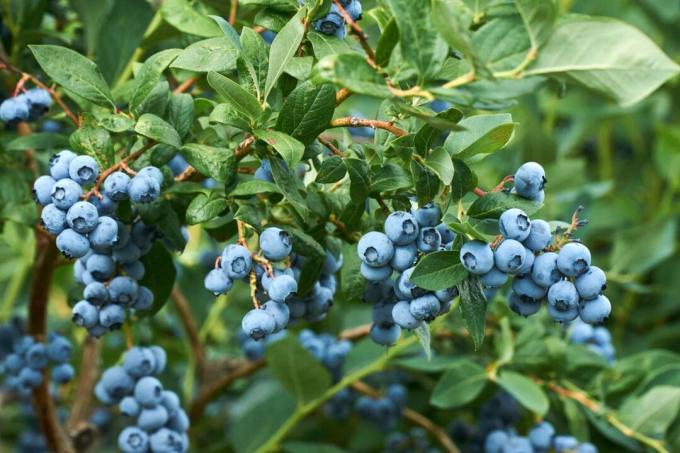
‚Duke‘: Very rich, early-ripening variety (from the beginning of July); large, firm fruits with a very good, aromatic taste; dense growth; very frost hardy.
'Denise Blue': Visually appealing plant with large, firm, very tasty and aromatic fruits; moderately productive.
'Legacy': Moderately high yielding variety; medium-sized, firm, very tasty fruits; resistant to gray mold and anthracnose fruit rot.
'Darrow': Very good taste, late ripening (from around mid-August) variety; very large, firm fruits; slightly sour taste; tall.
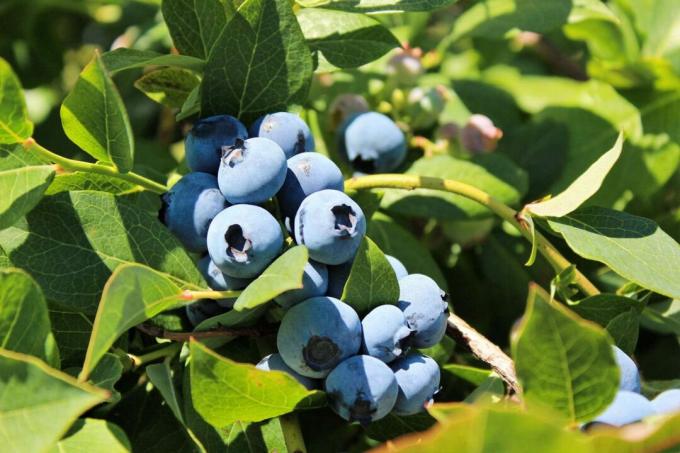
Currant varieties
While red currants have higher levels of fruit acids than white and black and therefore taste more acidic, white currants are somewhat milder and sweeter. Black currantswhich, by the way, belong to a different type of plant, are quite tart. They are therefore rarely consumed fresh and more often in the form of jelly, juices or liqueurs. This is actually a shame when you consider that black currants are five times as rich in vitamin C as red or white currants.
‚Jonkheer van Tets‘: Tried and tested, early ripening (from mid-June), red currant; vigorous and richly bearing; juicy, aromatic, large berries; possibly the best-flavored fruit among red currants; demanding in terms of location; not recommended for regions with high rainfall, otherwise the disease pressure increases; well suited for hedge training; endangered by frost.

‚Rolan‘: Robust, healthy variety with large, light red, firm berries; sour-aromatic taste; medium vigorous; if there is no or insufficient pruning, 'Rolan' tends to grow poorly; well suited for locations with higher rainfall; tends to trickle.
Note: Irrigation is a physiological disorder in which some flowers do not produce berries due to various causes. However, this is only visually important, as some berries are missing from the grape. Irrigation has no effect on taste and quality.
‚Rotet‘: Medium-late variety with rain-resistant red berries; sour, very aromatic taste; high yields; very strong growing; slightly endangered by frost due to early flowering, otherwise robust and not endangered by trickling; resistant to leaf fall disease.
'Vit Jätte': rich, white currant with large, yellow berries; mild-sweet, excellent taste; medium vigorous; somewhat prone to powdery mildew.
'Primus': white, slow-growing currant; medium to late ripening; small, white-yellowish fruits; many seeds in the fruits; sweet, very aromatic taste; profitable.

'Bona': early ripening black currant with large fruits; excellent taste; very short grape; medium vigorous; mildew tolerant.
‚Ometa‘: Also black, medium-late to late currant variety; large, aromatic and extremely tasty fruits; strong, upright growth; richly bearing; relatively robust plant.
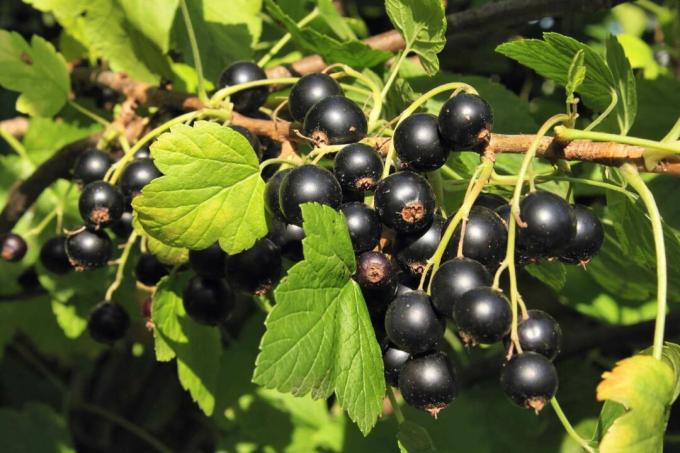
We describe many other varieties in our special article Currant varieties.
Gooseberry varieties
Gooseberries have never attracted much attention in commercial farming and are therefore not available in stores everywhere. Growing the sour fruits in their own home garden is all the more important for gooseberry lovers. These two are our favorite gooseberries:
'Hönings Earliest': Green gooseberries ripening very early; vigorous; medium-sized, soft fruits; great taste.
'Rolonda': Late ripening, red gooseberry with small, dark, very tasty berries; medium vigorous; resistant to powdery mildew.
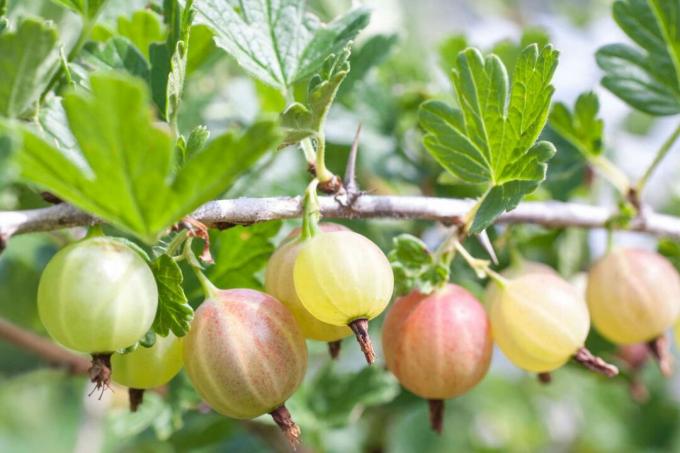
An even better overview of the Gooseberry varieties can be found here in our variety article.
Cranberry varieties
Cranberries come from North America and form tendrils up to 25 cm high. They look great and are therefore ideal as ground covers.
'Early Black': early ripening variety with medium-sized, dark red to slightly blackish berries; very aromatic fruits; very frost hardy.
'Bergman': richly bearing variety with medium-sized, dark red fruits; grows flat and forms a lot of foliage; ideally suited as a ground cover.
'Stevens': We recommend this variety for drier soils and harsher climates; grows quickly and is very productive.

Cranberry varieties
Cranberries many people only know from the glass. But the cranberries are not only convincing in terms of taste. The bright red berries are also an eye-catcher next to the small, dark green leaves. Like cranberries, lingonberries can also serve as a ground cover. If you want to cook your own cranberries in the near future, we recommend the following varieties:
'Coral': round, medium-red berries; Shoots are heavily branched and are approx. 30 cm high; well suited for plant troughs.
'Sussi': about 15 to 25 cm tall; large, round, dark red berries.

Tip: For a rich harvest, it is important to provide the berry bushes with sufficient nutrients. Our Plantura organic tomato fertilizer is a mainly organic long-term fertilizer in granulate form, which optimally fertilizes not only vegetables but also berries.
In case you haven't had enough of berries, you can find it here 9 types of berries you may not know.
